These are actual photos of aircraft breaking the sound barrier. This phenomena only happens at the instant an aircraft breaks the sound barrier and it literally appears like the aircraft goes through a wall. I hope you find these pictures as fascinating as I do.
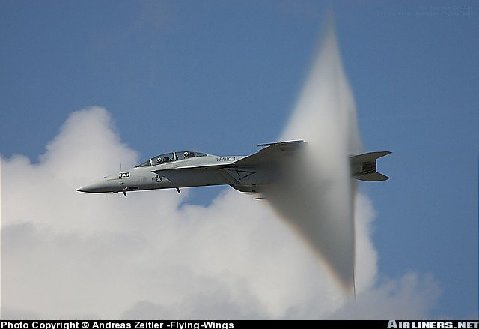
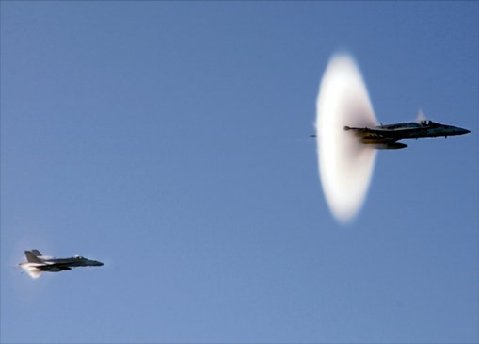
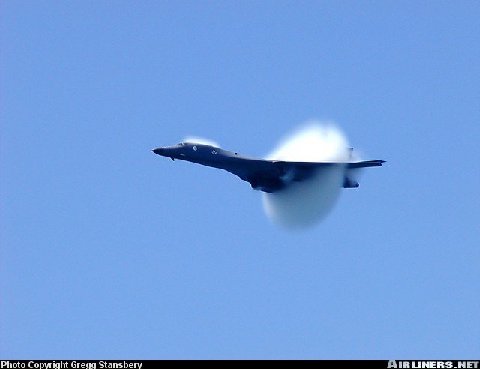
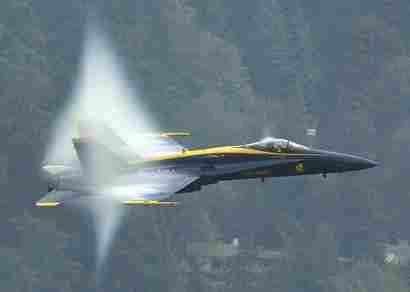
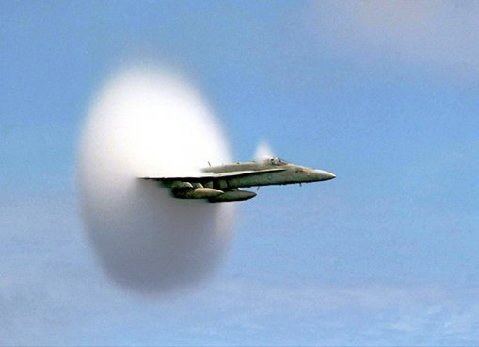
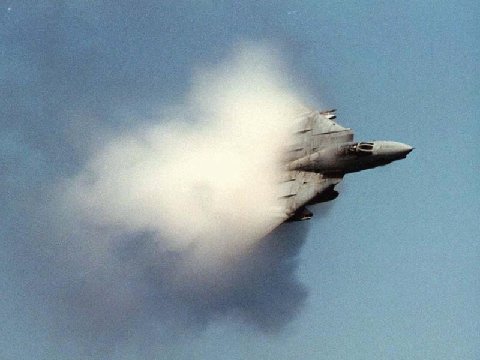
A naval veteran of 12 years, Gay, 38, manages a crew of eight assigned to take intelligence photographs from the high-tech belly of an F-14 Tomcat, the fastest fighter in the U.S. Navy. In July, Gay had been part of a Joint Task Force Exercise as the Constellation made its way to Japan.
Gay selected his Nikon 90 S, one of the five 35 mm cameras he owns. He set his 80-300 mm zoom lens on 300 mm, set his shutter speed at 1/1000 of a second with an aperture setting of F5.6. “I put it on full manual, focus and exposure,” Gay said. “I tell young photographers who are into automatic everything, you aren’t going to get that shot on auto. The plane is too fast. The camera can’t keep up.”
At sea level a plane must exceed 741 mph to break the sound barrier, or the speed at which sound travels. The change in pressure as the plane outruns all of the pressure and sound waves in front of it is heard on the ground as an explosion or sonic boom. The pressure change condenses the water in the air as the jet passes these waves. Altitude, wind speed, humidity, the shape and trajectory of the plane – all of these affect the breaking of this barrier. The slightest drag or atmospheric pull on the plane shatters the vapor oval like fireworks as the plane passes through, he said everything on July 7 was perfect. “You see! this vapor flicker around the plane that gets bigger and bigger. You get this loud boom, and it’s instantaneous. The vapor cloud is there, and then it’s not there.”
via email from Martha Clark, Tue, 7 Mar 2006 15:19:11 -0800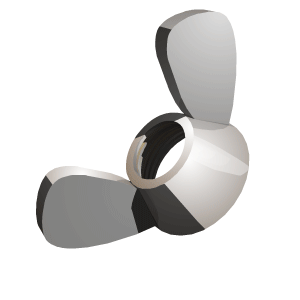
Leave a Reply
You must be logged in to post a comment.